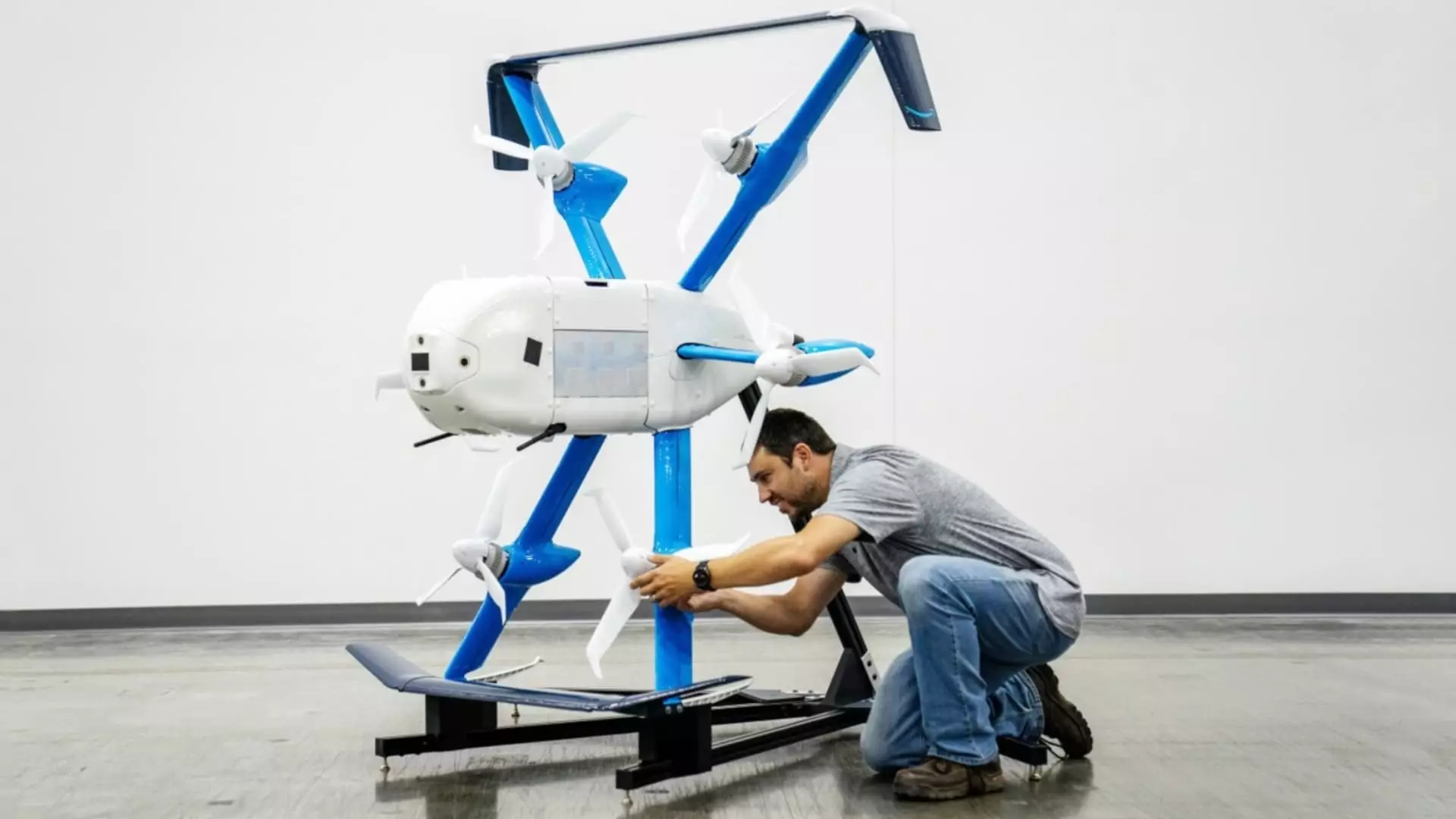After several months of silence, Amazon has reignited its ambitious drone delivery program, Prime Air, reestablishing operations in College Station, Texas, and Tolleson, Arizona. This comes in response to a software hiccup that halted operations back in January. The disruption stemmed from an altitude sensor anomaly triggered by airborne dust—an occurrence significant enough for Amazon to pause deliveries as a precaution. While the company insists that this hiccup never posed a real safety threat, it made a proactive choice to address potential risks rather than wait for an incident. This decision reflects a responsible approach in a world increasingly dependent on technological innovation.
The excitement around Amazon’s drone service ignites a broader conversation about the future of logistics and its implications for consumer behavior. As the drones embark on their mission to deliver packages in record time, a new era of convenience and speed is on the horizon. Amazon’s spokesperson, Av Zammit, stated, “Safety underscores everything we do at Prime Air.” By reaffirming their commitment to safety, Amazon seeks to build consumer trust, which is crucial in a sector where technological missteps can lead to significant backlash.
Unprecedented Demand and Bold Aspirations
With the recent return of drone operations, Amazon claims that they’ve experienced “unprecedented levels of demand.” This enthusiasm underscores the growing consumer appetite for faster and more innovative delivery solutions. David Carbon, an executive leading Amazon’s drone initiative, proudly shared that a recent delivery was accomplished in just over 31 minutes. While the specifics of the drone’s journey remain vague, the achievement paints a vivid picture of a burgeoning reality in logistics—a reality where consumers receive necessities almost instantaneously.
However, skepticism lingers. Despite these glimmers of progress, the company’s drone ambitions remain stymied in practical applications. After more than ten years of development, Prime Air is currently operational in just two U.S. locations, with a previously established test site in Lockeford, California, shutting its doors. Such limitations raise questions: Is Amazon’s grand vision of drones zipping around cities delivering everyday items becoming a pie-in-the-sky dream? Or could it be that they are cautiously laying a solid groundwork for future expansion, even as they face challenges worthy of a cautionary tale?
Technical Triumphs and Tribulations
The launch of the MK30 drone, designed with quieter technology and the ability to navigate light rain, marks a significant step in addressing past complaints from residents in College Station about drone noise pollution. By moving their operational hubs farther away from homes, Amazon is attempting to bridge the gap between innovation and community acceptance—an approach that will be necessary as the company endeavors to roll out broader services in the coming years.
However, the road hasn’t been entirely smooth. Test flights have not been devoid of failures; crashes have raised eyebrows regarding the reliability of these mechanical messengers. Reports of mid-air collisions and technical failures—unrelated to the pause in operations—could concern stakeholders and consumers alike. While Amazon asserts that safety is paramount, the practical implications of these incidents cannot be overlooked. Building robust drones that can operate autonomously in complex environments requires an industry-wide drive toward addressing underlying technical challenges.
The Path Ahead: Regulatory and Global Challenges
Additionally, Amazon faces not only operational hurdles but also regulatory landscapes that can inhibit growth. Despite its milestone in regulatory approvals, the Federal Aviation Administration (FAA) poses potential bottlenecks for immediate expansion. International aspirations, particularly in aiming at expansion into the U.K., will demand thorough navigation through complex laws and regulations that govern airspace and drone operations. As every nation adopts its unique set of rules, Amazon’s global vision may bob and weave, testing its strategic prowess in logistics management.
It remains clear that while the vision of rapid and efficient deliveries is tantalizing, there are plenty of winding roads on the way to making it a daily reality. The narrative around Amazon’s drone delivery program serves as a microcosm of the larger technological race—a race fueled not only by innovation but by the relentless pursuit of consumer satisfaction. Certainly, Amazon’s overall goal to achieve 500 million packages delivered by drone annually by the decade’s end is ambitious, leaving observers eager to see how their journey will unfold amidst both setbacks and breakthroughs.
In this high-stakes game of logistics reinvention, the turbulence is inevitable—but so is the excitement surrounding what might just be the future of delivery.

